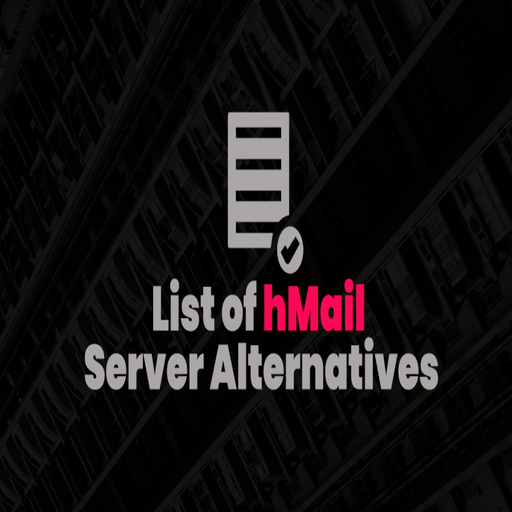hMailServer: A No-Nonsense Mail Server for Windows That Just Works
There aren’t many mail servers built specifically for Windows. Even fewer that are free, lightweight, and stable over the years. hMailServer is one of the few that still ticks those boxes — and that’s exactly why it keeps showing up in small business networks, test labs, and local environments where simple mail just needs to happen.
It’s not an Exchange replacement. And it doesn’t try to be. Instead, hMailServer focuses on the core: SMTP, POP3, IMAP, multiple domains, anti-spam basics, SSL — enough to send and receive mail without pulling in five other systems.
What You Actually Get
| Feature | What It Handles |
| SMTP / IMAP / POP3 | Standard protocols, easy to use with any mail client. |
| Multi-domain Support | Host multiple domains with separate user accounts. |
| Spam Protection | DNSBL, SPF checks, HELO validation, custom score filters. |
| Antivirus Hook | Works with ClamAV or custom scanners via command-line calls. |
| Scriptable Events | Use VBScript to run actions on delivery or authentication. |
| SSL / TLS | Encrypts connections across all mail protocols. |
| Admin Console | Windows-native interface — no web UI needed. |
Real-Life Use Cases
– Hosting basic email accounts on a Windows VPS
– Running mail alerts from internal systems (backup jobs, scripts, IoT devices)
– Providing custom domain mailboxes for clients or staff
– Replacing overpriced third-party SMTP relays with something local
– Testing mail flow, spam scoring, or MTA integrations in dev environments
Installation: Clean and Fast
1. Download It
Get the latest stable release from hmailserver.com. It’s a single Windows installer.
2. Install the Core
Choose between the built-in database (for quick setups) or external SQL if you’re managing lots of accounts.
3. Launch the Admin Tool
After install, set a master password and connect via the Windows console app. No browser needed.
4. Set Up Your Domain
Add a domain like company.local or example.org. Then create mailboxes (info@, alerts@, etc.)
5. Configure DNS
– Add an MX record pointing to your server’s public IP
– Add SPF and PTR records to keep spam filters happy
– DKIM requires manual setup via external tools or scripting
6. Secure the Server
Upload SSL certs and turn on encryption for all protocols. Lock down relay permissions to avoid abuse.
7. Test It
Try sending mail through Outlook or Thunderbird. Use telnet if needed. Check logs if anything fails — hMailServer logs are detailed and easy to read.
Things to Be Aware Of
– No built-in webmail — but Roundcube works great with it
– Quarantine features are missing — spam is tagged, not isolated
– Development is slow, but the core is stable
– Not ideal for hundreds of users unless you pair it with strong hardware and database tuning
– DKIM needs external help — no UI for it yet
Why It Still Has a Spot on the Bench
hMailServer is one of those tools that just stays useful. It doesn’t break often, doesn’t nag you for updates, and doesn’t pretend to be smarter than it is. For admins who want total control over their mail server on Windows — without going deep into Exchange or rolling out a full Linux stack — it’s still a solid option.
Sometimes, having something that “just works” is exactly what you want.







